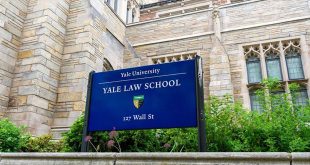Wahhabis are not considered to be part of the four major madhāhib due to the great contrast between their approach in methodology and the methodologies of the Hanbalis and other madhāhib.
“Wahhabism” is, by no means, the term of choice for the Wahhabis them-selves. Rather, they refer to themselves as Salafis, muwaḥḥidūn (monotheists) or muslimūn (Muslims) and are most closely linked with the Hanbali madhhab (school of thought) in terms of fiqh. By using the phrase “Wahhabi,” the opponents of Wahhabism sought to link such individuals to the 18th century C.E. scholar, Muḥammad ibn ‘Abdi’l-Wahhāb (d. 1206 A.H./ 1791/2 C.E.). Thus, Ibn ‘Abdi’l-Wahhāb was viewed as the founder of a new madhhab. Wahhabis are not considered to be part of the four major madhāhib due to the great contrast between their approach in methodology and the methodologies of the Hanbalis and other madhāhib. Numerous issues in fiqh (jurisprudence) separate Ibn ‘Abdi’l-Wahhāb from previous Hanbali scholars. Here the focus will be on Ibn ‘Abdi’l-Wahhāb’s claim that those who engaged in what he deemed “superstitious” practices at graves (such as kissing or wiping graves or calling upon the deceased for help) were misguided and in some cases (like seeking help from the deceased) had apostatized and were therefore deserving of death. If one looks at earlier Hanbali sources, it is possible to see the gradual development of the Hanbali madhhab concerning this issue (as well as other matters in fiqh),culminating in Ibn ‘Abdi’l-Wahhāb’s controversial language, which was capable of dismissing a large percentage of Muslims as being disbelievers.
It is only appropriate to ask how and why Ibn ‘Abdi’l-Wahhāb derived these rulings that separated him and his sympathizers from other Hanbalis. Ibn ‘Abdi’l-Wah-hāb and the early Wahhabi historians from the late 18th and early 19th centuries prefer to focus on the degradation of Muslim practice and the numerous shrines that had been erected for the worship of respected figures. The Wahhabi movement, they argue, was therefore the natural outcome of the deviance of Muslims at large. A closer examination of his life, however, reveals that Ibn ‘Abdi’l-Wahhāb’s teacher, Muḥammad Ḥayāt al-Sindī (d. 1163 A.H./ 1749/50 C.E.), greatly influenced his stance ontaqlīd(adhering to the opinion of another scholar) and “superstitious” practice. But perhaps the greatest factor contributing to the creation of the Wahhabi movement was the writing of Taqī al-Dīn Aḥmad ibn Taymiyyah (d. 728 A.H./ 1327/8 C.E.).
As will be demonstrated shortly, before Ibn Taymiyyah, certain acts that were performed near graves, such as seeking blessings from the graves of righteous individuals or prophets, were either implicitly encouraged or considered to be of questionable merit. Earlier Hanbali scholars, though, did not forbid such acts. Ibn Taymiyyah expressed the differing opinions in Hanbali thought and stated his personal opinion, arguing that these acts were forbidden. Therefore, while he provided his own opinion on these matters, it is clear from his works that such issues were far from settled during his time. Ibn Taymiyyah would also occasionally write that such acts constituted shirk, though he did not explicitly state that those guilty of these acts were to be treated as apostates.
 Ijtihad Network Being Wise and Faithful Muslim in the Contemporary World
Ijtihad Network Being Wise and Faithful Muslim in the Contemporary World

